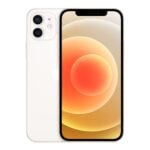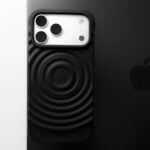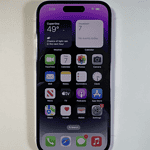Nintendo recently announced that the Nintendo Switch 2 will be able to play games from the original Switch, both physical and digital. This means that buying the original Switch might seem pointless since the Switch 2 will do everything the original does, and more. By confirming this backward compatibility for the upcoming Switch 2, Nintendo helps fans easily move to the new device with access to many games. However, this also makes it look like the original Switch is becoming outdated.
The original Switch, launched in March 2017, has sold over 125 million units worldwide as of 2023. This success sets up the Switch 2, which is expected to have better hardware and features. Other consoles, like the Game Boy Advance and Wii, also had backward compatibility, which helped their success.
Even though the original Switch might seem obsolete with the new version coming, there are still reasons to consider it. Its lower price, especially in the used market, and its large library of games make it a good choice for gamers on a budget. The Switch Lite, which is a handheld-only version, also offers an easy way to join the Switch family. The original Switch remains a solid option for those who want to experience Nintendo’s unique hybrid gaming.
Understanding Switch Backward Compatibility
What is Backward Compatibility?
Backward compatibility means a newer console can play games designed for an older one. In the case of the Nintendo Switch 2, it means you can use your current Switch game cartridges and digital downloads on the new system. This is a big plus for gamers who have built up a library of games. It saves them from having to repurchase titles they already own.
How Important Is This Feature?
Backward compatibility is a major selling point for consoles. It allows players to transition to new hardware without losing access to their existing game collections. This is a big deal for customer loyalty. It encourages upgrades and reduces the risk of players switching to a competing console. In the past, Nintendo has used backward compatibility with great success. The Game Boy Advance played Game Boy games, and the Wii played GameCube games. This helped ease the transition for players and boosted sales of new hardware. Other companies like Microsoft with Xbox have also used backward compatibility to their advantage.
Benefits of Backward Compatibility
- Saves Money: Players don’t have to buy the same games again.
- Keeps Collections Intact: Gamers can keep playing their favorite games on newer hardware.
- Eases Transitions: It makes upgrading to a new console less of a hassle.
- Preserves Gaming History: It keeps older games alive and accessible.
Potential Drawbacks of Backward Compatibility
While mostly positive, there can be some minor drawbacks.
- Not All Games May Work: Nintendo has said some games may not be fully compatible. This could be due to hardware differences or software issues.
- Performance Differences: Games designed for the original Switch may not fully utilize the Switch 2’s power. While they will likely still work, they might not look or run as well as games built specifically for the new system.
Comparing Switch Models
Here’s a quick comparison of the original Switch and the upcoming Switch 2:
| Feature | Original Nintendo Switch | Nintendo Switch 2 |
|---|---|---|
| Backward Compatibility | No | Yes (mostly) |
| Processing Power | Lower | Higher |
| Graphics | Lower | Higher |
| Expected Price | Lower (especially used) | Higher |
Should You Buy an Original Switch Now?
This is a key question. If you’re on a tight budget, the original Switch is still a great option. It has a huge library of games, and the price will likely drop after the Switch 2 comes out. However, if you want the latest technology and the best performance, it makes sense to wait for the Switch 2. If you want to play games right away, the original Switch is the best choice. New consoles are often hard to find at launch.
What About the Switch Lite?
The Switch Lite is a handheld-only version of the original Switch. It’s smaller and lighter, but it can’t be docked to a TV. If you only play in handheld mode and want the most affordable option, the Switch Lite is worth considering. However, if you want the flexibility of playing on a TV or you want to play games that require detachable Joy-Cons, the original Switch or the Switch 2 are better choices. The Switch Lite will also benefit from the used market price drops when the Switch 2 is released.
Short Summary:
- Backward compatibility for physical and digital Switch games confirmed.
- Industry experts emphasize its importance due to Nintendo’s large game library.
- New console aims to retain player investment and enhance user experience.
The release of the Nintendo Switch 2 has stirred excitement among gamers, particularly with the announcement of backward compatibility—a feature that many hoped for yet feared might not come to fruition. Unlike previous generations where backward compatibility was a hit or miss, Nintendo has made a bold statement that players will be able to carry over their already existing libraries when the new console launches.
According to Serkan Toto, a respected gaming industry analyst, “Backward compatibility was almost unavoidable. Nintendo sold 1 billion Switch games, and it makes sense to let buyers of the new device carry over their library.” This statistic illustrates just how significant the Switch’s gaming ecosystem has become, with an average of nearly seven games purchased per console owner. Clearly, such a large user base demands continuity, and Nintendo is responding in kind.
Backward compatibility has been a contentious topic in the gaming community for decades. When Sony launched the PS5, many speculated about whether it would play games from earlier systems. Sony’s hesitance to confirm its backward compatibility plans until the last minute led to considerable frustration among consumers, especially when many players were keen to retain access to their beloved PS4 titles. Conversely, when Nintendo announced the Switch 2, it was quick to clarify that the new console would indeed support both digital and physical titles from its predecessor—a move that has been largely welcomed as a sign of good faith toward long-time supporters.
The need for backward compatibility becomes more pressing given the substantial investment players have made not only in the console itself but also in its vast library of games. Nintendo’s decision to allow backward compatibility seems to cater to serious gamers who want to ensure that their previous purchasing decisions do not go to waste, ultimately bolstering trust in the brand.
“We believe that it is important for Nintendo’s future to make use of Nintendo Account and carry over the good relationship that we have built with the over 100 million annual players on Nintendo Switch to its successor,” stated Shuntaro Furukawa, President of Nintendo.
The Nintendo Switch 2 will include a backward compatibility feature that allows players to use most of their existing Switch games on the new console. This move boosts consumer confidence and helps Nintendo compete better with Sony and Microsoft, who have both successfully implemented backward compatibility in their consoles. This feature meets player expectations, especially as many gamers now enjoy digital libraries across multiple platforms, thanks to services like Steam.
While most Switch games will work on the Switch 2, some titles may not carry over. Nintendo will provide details on which games are excluded later, keeping players informed. This commitment to compatibility is a change for Nintendo, which has not always supported classic titles consistently.
Before the announcement, many were concerned that changes in the console’s design might make backward compatibility difficult. The unique hybrid nature of the original Switch posed challenges for performance and compatibility, but Nintendo seems ready to tackle these issues. They promise an easy experience that allows access to older games.
There are also questions about whether existing accessories, like Joy-Con controllers, will work with the Switch 2. Although there is no official confirmation yet, many hope that the new console will support gear from the original Switch to help with the transition.
Excitement isn’t limited to backward compatibility. Nintendo has hinted at several new game titles for the Switch 2, including a new version of Mario Kart that could accommodate 24 players. This increase could make multiplayer racing even more fun for friends and families. Industry experts predict that Nintendo will emerge as a strong competitor in the next console generation. The early launch of the Switch 2 allows Nintendo to establish itself before Sony and Microsoft release their next consoles.
In addition to popular titles like the new Mario Kart, players can look forward to games like Metroid Prime 4: Beyond, remakes of classic titles, and a new Animal Crossing game. This new installment could revive the franchise, especially since it was beloved during challenging times.
As Nintendo reveals the specs and features of the new console, gamers eagerly await more details during the upcoming Nintendo Direct showcase in April, which will discuss pricing and technical capabilities. With all the excitement around the Switch 2, expectations are very high.
There is also interest in which third-party developers might create games for the Switch 2. Previous collaborations have been successful, so big titles like Grand Theft Auto VI may join the Nintendo library. There is buzz about the possibility of Call of Duty appearing on the Switch 2 as part of future plans, expanding the gaming experience.
Overall, Nintendo’s focus on backward compatibility is a major selling point for the Switch 2. This decision is expected to be well received by players and strengthen Nintendo’s position in the console gaming market.







